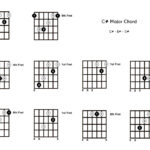In 2003, Rolling Stone magazine embarked on a monumental task: ranking the top 100 guitar players in rock history. This wasn’t just about technical skill; it was a celebration of influence, innovation, and the profound impact these musicians had on shaping the landscape of music. The list, curated by a lifelong guitar enthusiast, aimed to capture the essence of the instrument’s transformative power and the artists who wielded it to change the world. While acknowledging the inherent subjectivity of any ranking, the original author humorously declared Jimi Hendrix as unequivocally number one, suggesting all others were vying for the second spot in terms of greatness. This compilation serves as a tribute to the guitar and its enduring legacy, reflecting one perspective on the pantheon of guitar heroes.
Exploring the Guitarists Who Defined Generations
This list from Rolling Stone delves into a diverse range of guitarists, each contributing uniquely to the evolution of rock and roll. From pioneers who shaped the very sound of the electric guitar to innovators who pushed its boundaries into new territories, these musicians represent a spectrum of styles, techniques, and influences. Let’s explore some of the featured artists and understand what made them stand out.
Kim Thayil
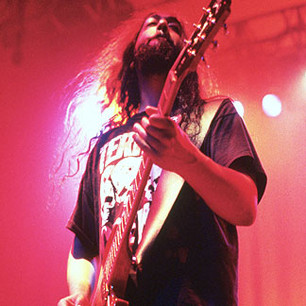 Kim Thayil of Soundgarden
Kim Thayil of Soundgarden
Kim Thayil, the guitarist for Soundgarden, played a pivotal role in reshaping metal in the late 80s and early 90s. Soundgarden’s approach wasn’t about destroying metal, but rather stripping it down to its raw essence and rebuilding it with a fresh perspective. Thayil’s guitar work is characterized by updated, forbidding sludge tones reminiscent of Led Zeppelin, combined with uniquely tweaked-out solos. His innovative use of drop-D tuning, lowering the low E string for increased heaviness, became a signature element and continues to influence hard rock guitarists today. Thayil’s sound was integral to the grunge movement emanating from Seattle, blending technical prowess with a raw, visceral energy.
Greg Ginn
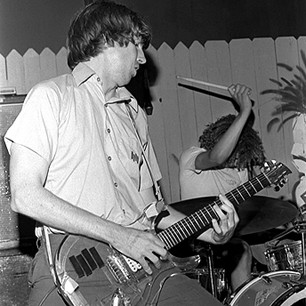 Greg Ginn of Black Flag
Greg Ginn of Black Flag
Greg Ginn, the driving force behind Black Flag, fundamentally reshaped blues-based rock within the intensity of punk rock. From Black Flag’s groundbreaking 1978 EP, Nervous Breakdown, through their influential career until 1986, Ginn guided the band through a remarkable evolution. They transitioned from raw, blue-collar punk to a denser, almost molasses-like metal sound. This progression was remarkably prescient, anticipating the grunge movement that would later emerge from Seattle. Ginn’s guitar playing was unconventional, angular, and fiercely independent, mirroring the band’s DIY ethos and uncompromising artistic vision.
Leigh Stephens
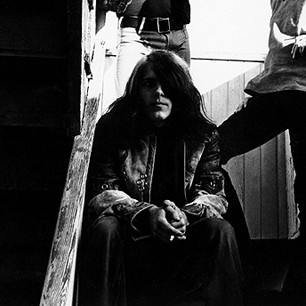 Leigh Stephens of Blue Cheer
Leigh Stephens of Blue Cheer
Leigh Stephens was at the forefront of heavy music in 1968, even before the genre had a definitive name. As the guitarist for the power trio Blue Cheer, Stephens was already pushing sonic boundaries and shredding eardrums with a potent blend of psychedelia and blues. Blue Cheer famously boasted about being the loudest band in the world, and Stephens’ molten, unrestrained solos perfectly embodied the untethered and abandoned spirit of late Sixties rock. His playing was characterized by its raw power and improvisational freedom, setting a precedent for the heavier sounds that would follow.
Robert Randolph
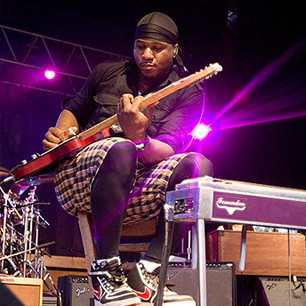 Robert Randolph performing with pedal steel guitar
Robert Randolph performing with pedal steel guitar
Robert Randolph brought the pedal steel guitar into a new light, making his name initially in gospel music before crossing over into the jam band scene. His family band is renowned for their electrifying live performances. Randolph’s thirteen-string instrument possesses a strikingly clear and resonant tone. His solos are marked by soulful, howling melodies and incredibly fast, perpetually building explorations, showcasing a unique blend of technical skill and improvisational flair rarely heard on the pedal steel in rock contexts.
Angus Young
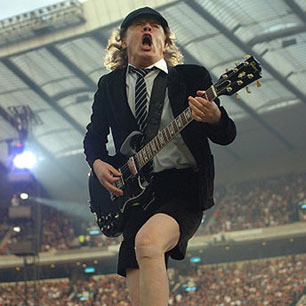 Angus Young of AC/DC
Angus Young of AC/DC
Angus Young, the iconic schoolboy-uniformed guitarist of AC/DC, is a master of raw, visceral rock and roll. He specializes in the kind of gritty, blues-infused solos that hark back to the early, often controversial characterization of blues music as “the devil’s music.” Young’s playing is infused with a potent mix of testosterone, hard liquor, and punk rock aggression. Yet, it’s the underlying blues swing that provides the bedrock for AC/DC’s enduring, trend-proof hard rock sound. His instantly recognizable riffs and high-energy stage presence have made him a rock icon.
Kevin Shields
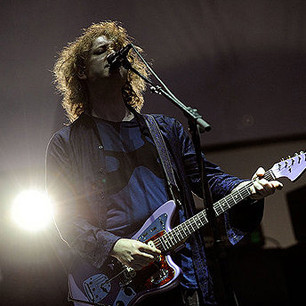 Kevin Shields of My Bloody Valentine
Kevin Shields of My Bloody Valentine
Kevin Shields, the innovative guitarist and sonic architect behind My Bloody Valentine, redefined guitar textures and dynamics in the late 80s and early 90s. In live performances, Shields was known for his motionless stance and ear-splitting volume, creating a wash of overtones that suggested the presence of instruments beyond what was visibly on stage. My Bloody Valentine was often categorized as “shoegaze,” and their music as “dream pop,” but these labels barely scratch the surface of their groundbreaking sound. Shields’ band crafted a completely new sonic language for the electric guitar, characterized by shape-shifting, surreal melodies and a stark contrast between delicate beauty and overwhelming noise.
Bert Jansch
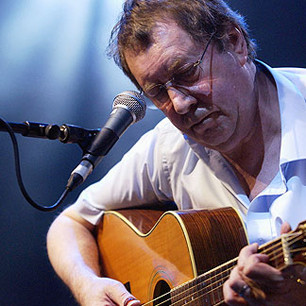 Bert Jansch playing acoustic guitar
Bert Jansch playing acoustic guitar
Bert Jansch, a highly influential acoustic guitarist, earned the admiration of guitar legends like Jimmy Page, who was reportedly obsessed with his playing, and Neil Young, who called Jansch his favorite acoustic guitarist. Jansch’s distinctive style fused jazz, blues, and classical elements with traditional folk music, making him a standout artist since his debut in 1965. His innovative fingerstyle techniques and intricate compositions have influenced generations of musicians, with even contemporary groups like Oasis and Pulp acknowledging his profound impact.
Fred “Sonic” Smith
 Fred "Sonic" Smith of MC5
Fred "Sonic" Smith of MC5
Fred “Sonic” Smith, alongside Wayne Kramer in the proto-punk band MC5, channeled the cosmic jazz explorations of Sun Ra through a high-energy rock and roll lens. Together, Smith and Kramer envisioned a hard rock sound that was ecstatic, uninhibited, and limitless. MC5’s raw power and revolutionary spirit were embodied in Smith’s guitar playing, which was characterized by its frenetic energy and unapologetic intensity, helping to pave the way for punk rock and beyond.
Wayne Kramer
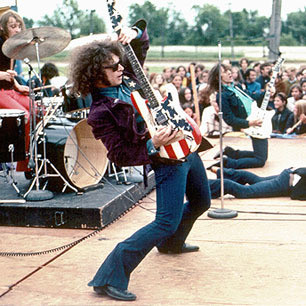 Wayne Kramer of MC5
Wayne Kramer of MC5
Wayne Kramer, sharing guitar duties with Fred “Sonic” Smith in MC5, was equally instrumental in forging the band’s groundbreaking sound. Like Smith, Kramer contributed to MC5’s vision of hard rock as something ecstatic and boundless, drawing inspiration from Sun Ra’s avant-garde jazz. Kramer’s guitar work was powerful, politically charged, and deeply influential, reflecting the band’s revolutionary ethos and high-octane performances.
Robby Krieger
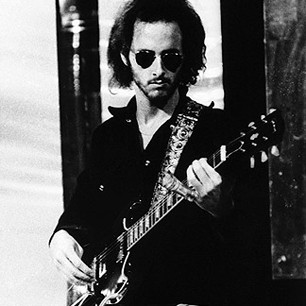 Robby Krieger of The Doors
Robby Krieger of The Doors
Robby Krieger, the guitarist for The Doors, distinguished himself through his remarkable flexibility and self-effacing approach to guitar playing. A versatile stylist, Krieger drew influences from diverse genres including country, flamenco, and raga. While capable of delivering raw and edgy sounds when needed, he prioritized instrumental interplay within The Doors’ unique musical landscape. His nuanced and often melodic guitar work was essential to the band’s psychedelic and blues-rock fusion.
Glen Buxton
 Glen Buxton of Alice Cooper
Glen Buxton of Alice Cooper
Glen Buxton, the original guitarist for Alice Cooper, was a gifted musical mimic whose deep understanding of the guitar styles of bands like the Rolling Stones and the Yardbirds helped shape the early sound of Alice Cooper. Buxton’s ability to translate and adapt these influences within the context of his Phoenix garage band provided the foundation for them to evolve into the theatrical rock phenomenon Alice Cooper. His gritty, elemental guitar leads intertwined with Michael Bruce’s solid riffs, creating a lasting legacy of exemplary hard rock.
D. Boon
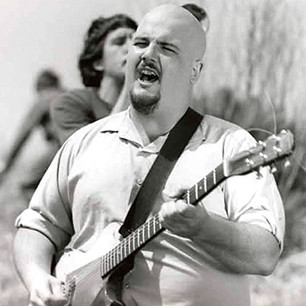 D. Boon of The Minutemen
D. Boon of The Minutemen
D. Boon, the guitarist and vocalist for The Minutemen, was known for his boundless musical curiosity and innovative approach. At the time of his tragic death in 1985, it seemed there were no limits to Boon’s musical exploration. The Minutemen’s seminal album Double Nickels on the Dime, featuring forty-three songs, exemplified his adventurous spirit, venturing into free-jazz dissonance, up-tempo country, helter-skelter funk, and dense experimental rock. Boon’s guitar playing was characterized by its eclecticism, energy, and intellectual depth, making him a highly influential figure in alternative and indie rock.
Dave Davies
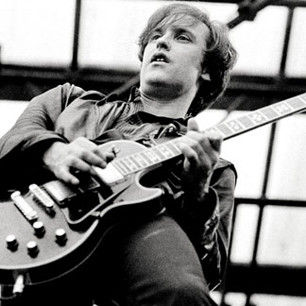 Dave Davies of The Kinks
Dave Davies of The Kinks
Dave Davies, the guitarist for The Kinks, was the raw, energetic force that propelled the band’s iconic sound. Brash, aggressive, and instantly recognizable, his chord progressions on The Kinks’ early hits have become essential learning material for aspiring rock guitarists. “You Really Got Me,” in particular, with its revolutionary distorted guitar sound, has launched countless garage bands and remains a cornerstone of rock and roll. Davies’ innovative use of distortion and power chords was hugely influential in shaping the sound of rock guitar.
Joan Jett
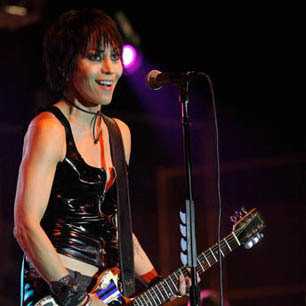 Joan Jett playing electric guitar
Joan Jett playing electric guitar
Joan Jett carved her place in rock history as a powerful rhythm guitarist and a symbol of female empowerment in rock music. While lead guitarists often become the iconic figures, rhythm players provide the essential soul of rock and roll. Jett’s lineage connects back to figures like Eddie Cochran and Pete Townshend, solidifying her importance in this tradition. From her early days with The Runaways to her success with The Blackhearts, Jett played with a direct, no-frills approach: all heart, and completely uncompromising. Her straightforward, powerful guitar playing and defiant attitude have inspired countless musicians.
Tony Iommi
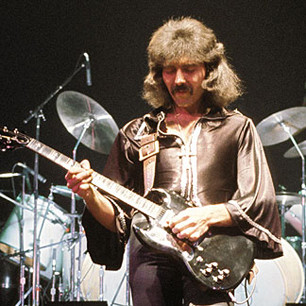 Tony Iommi of Black Sabbath
Tony Iommi of Black Sabbath
Tony Iommi, the guitarist for Black Sabbath, is widely recognized as the progenitor of heavy metal guitar. While other guitarists explored complex solos and virtuosic techniques, Iommi, a left-handed player who overcame a factory accident that damaged his fretting fingers, went in a different direction. Black Sabbath took rock’s simplicity and pushed it even further, creating a sound that was darker, heavier, and more ominous. Iommi’s use of downtuned guitars, minor chords, and a low, rumbling tone defined the menacing and foreboding sound that became the foundation of heavy metal.
Randy Rhoads
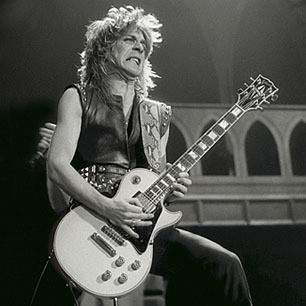 Randy Rhoads playing guitar on stage
Randy Rhoads playing guitar on stage
Randy Rhoads, who joined Ozzy Osbourne’s band in 1980 after being recruited from Quiet Riot, was a classically trained guitarist who brought a new level of virtuosity to heavy metal. His screeching, arpeggiated solos, most notably on “Crazy Train,” immediately established him as a contemporary peer of Eddie Van Halen. Rhoads’ technically brilliant and emotionally charged playing had an immediate and enormous impact on metal guitar. Tragically, his life and career were cut short by a plane crash in 1982, but his influence remains profound and would undoubtedly have grown exponentially had he lived.
Eddie Cochran
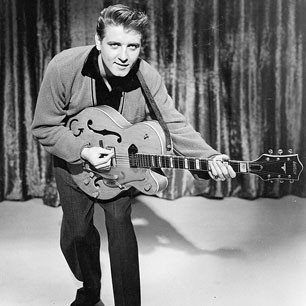 Eddie Cochran playing guitar and singing
Eddie Cochran playing guitar and singing
Eddie Cochran, a rockabilly pioneer, achieved stardom at just nineteen in 1957 and tragically passed away at twenty-one. In his brief but impactful career, Cochran’s itchy, aggressive strumming and irresistible rhythm guitar figures became a powerful musical weapon. He used his guitar to challenge authority in songs like “Summertime Blues,” to rally energy in “C’mon Everybody,” and to evoke romance in “Somethin’ Else.” Cochran’s energetic guitar playing, combined with his rebellious image, made him a foundational figure in rock and roll.
Neil Young
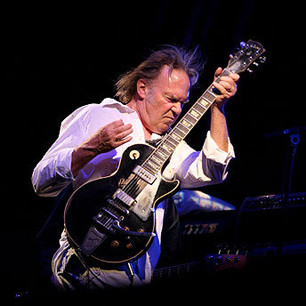 Neil Young playing electric guitar
Neil Young playing electric guitar
Neil Young, a multifaceted musician, is known for both his hauntingly beautiful acoustic guitar work and his raw, emotionally charged electric guitar playing. While his delicate acoustic style is often underestimated, it’s on electric guitar that Young has truly staked his claim as a rock icon. A restless musical experimenter, he consistently returns to simple melodies, powerful chords, and a remarkable ability to transform seemingly basic musical ideas into something deeply moving and revelatory. Young’s signature sound is characterized by its raw, untamed emotion and his distinctive use of feedback and distortion.
David Gilmour
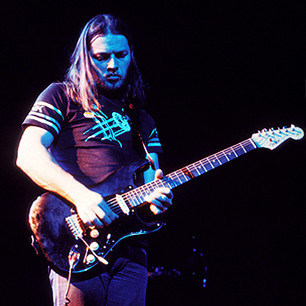 David Gilmour of Pink Floyd playing guitar
David Gilmour of Pink Floyd playing guitar
David Gilmour, the guitarist for Pink Floyd, brought a profound sense of drama and emotional depth to the band’s music. While Roger Waters provided Pink Floyd’s conceptual weight and lyrical content, Gilmour’s guitar playing added layers of emotional resonance. His solos were characterized by a slow-burn intensity and stately elegance, capable of conveying deep soulfulness, as heard in “Comfortably Numb,” or evoking expansive, sci-fi dreamscapes reminiscent of Syd Barrett’s early psychedelic visions, such as in “Echoes.” Gilmour’s lyrical phrasing, sustain, and masterful use of effects contributed significantly to Pink Floyd’s iconic sound.
Derek Trucks
 Derek Trucks playing slide guitar
Derek Trucks playing slide guitar
Derek Trucks began his professional music career remarkably young, touring with his first band at age twelve. By his mid-twenties, he had already established himself as a leading guitarist, performing with both the Allman Brothers Band and leading his own jazz-tinged Derek Trucks Band. Trucks is renowned as a fluid and expressive slide guitarist, effortlessly moving between Southern rock, reggae, gospel, jazz, and African musical styles. His improvisational skills, deep blues roots, and mastery of slide technique have made him one of the most respected guitarists of his generation.
Robert Quine
 Robert Quine playing electric guitar
Robert Quine playing electric guitar
Robert Quine developed a unique guitar style that drew equally from free jazz, blues, and rock, making him a perfect collaborator for Richard Hell in the New York punk band The Voidoids. Quine’s unconventional and angular approach complemented Hell’s streetwise poetry and the band’s raw energy. Beyond The Voidoids, Quine made significant contributions to Lou Reed’s acclaimed solo album The Blue Mask and Matthew Sweet’s Girlfriend, showcasing his versatility and distinctive voice as a guitarist.
Cliff Gallup
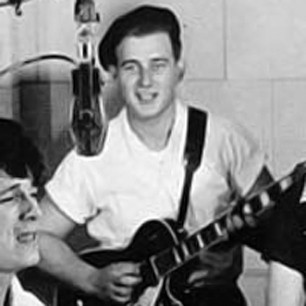 Cliff Gallup playing guitar with Gene Vincent
Cliff Gallup playing guitar with Gene Vincent
In a brief but transformative period as lead guitarist for Gene Vincent’s Blue Caps in 1956, Cliff Gallup essentially invented the stylistic swagger that is now considered fundamental to rock guitar playing. His slashing, razor-sharp guitar assaults pushed the instrument decisively away from country picking and into the edgier, more rebellious territory that rock and roll guitar has explored ever since. Gallup’s innovative techniques and energetic performances on tracks like “Race With the Devil” set a new standard for rock guitarists.
Robbie Robertson
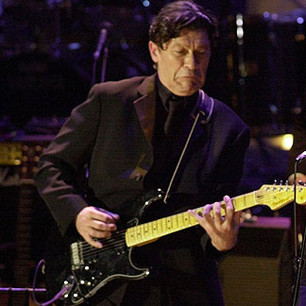 Robbie Robertson playing guitar
Robbie Robertson playing guitar
Robbie Robertson’s songwriting was foundational to the rustic and soulful sound of The Band, but his terse, poignant guitar playing was often an underrated yet crucial element of the group’s musical identity. The Canadian-born Robertson and the other members of The Band, initially known as the Hawks, backed Bob Dylan on his controversial first electric tour in 1966. During this tour, Dylan famously recognized Robertson’s guitar genius, proclaiming him a “mathematical guitar genius,” highlighting his precise and thoughtfully constructed playing.
Henry Vestine
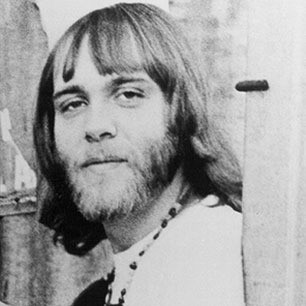 Henry Vestine playing guitar
Henry Vestine playing guitar
Henry Vestine, nicknamed “Sunflower,” was known for his dynamic guitar interplay with Alan Wilson’s slide guitar in Canned Heat, contributing to hits like “On the Road Again” and “Going Up the Country.” Vestine’s musical journey was diverse, including early membership in Frank Zappa’s Mothers of Invention and collaborations with free jazz musician Albert Ayler. His versatile playing style encompassed blues, rock, and avant-garde elements, reflecting his wide-ranging musical interests.
Ali Farka Toure
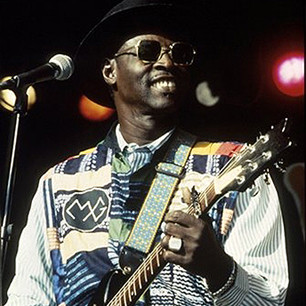 Ali Farka Toure playing guitar
Ali Farka Toure playing guitar
Ali Farka Toure, a celebrated Malian singer and guitarist, is often compared to John Lee Hooker due to stylistic similarities, but this comparison simplifies his artistry. While influenced by rural blues, Toure was a technically masterful guitarist whose playing incorporated a vast range of influences, from African hymns to folk songs. His delicately plucked melodies and incredibly fast runs showcased a unique fusion of African musical traditions and blues sensibilities.
Adam Jones
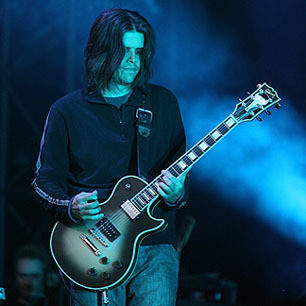 Adam Jones of Tool playing guitar
Adam Jones of Tool playing guitar
Adam Jones, the guitarist for Tool, is known for his distinctive and atmospheric approach to guitar playing. In high school, he played bass in a band with future Rage Against the Machine guitarist Tom Morello, indicating his early musical connections. In Tool, Jones combines the heavy, downtuned chug of death metal with ominous and expansive atmospherics influenced by progressive rock bands like Rush and King Crimson. He rarely resorts to conventional solos, preferring to build complex and rhythmic riffs, often in unconventional time signatures like 15/8, contributing to Tool’s signature sound.
Johnny Winter
 Johnny Winter playing slide guitar
Johnny Winter playing slide guitar
Johnny Winter, a blues guitar virtuoso, successfully transitioned blues into hard rock territory in the early 1970s. His high-energy, overdriven interpretations of classics like “Johnny B. Goode” and “Jumpin’ Jack Flash” became signature performances. Winter also produced a series of significant albums for his hero Muddy Waters in the late 1970s, further cementing his deep connection to the blues tradition. For Winter, blues was not just a genre but a “living music” and a personal “necessity.”
Trey Anastasio
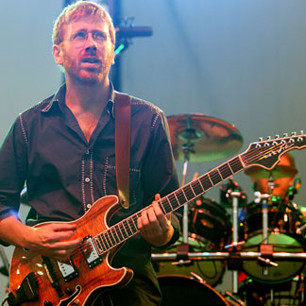 Trey Anastasio of Phish playing guitar
Trey Anastasio of Phish playing guitar
Trey Anastasio, the lead guitarist for Phish, is known for his exceptional musical versatility and improvisational skills. He possesses an almost uncanny ability to play anything he can hear in his mind, drawing comparisons to jazz guitarists like Pat Metheny in his cinematic sense of pacing and to Frank Zappa in his playful inclination towards musical experimentation and noise. Anastasio’s extended solos often balance technical fingerwork with soaring climaxes, remaining exciting and engaging even in their most spontaneous and unpredictable moments.
Joni Mitchell
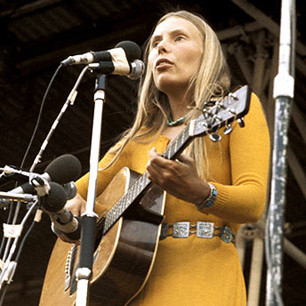 Joni Mitchell playing guitar
Joni Mitchell playing guitar
Joni Mitchell’s innovative and daring guitar work is deeply intertwined with her use of over fifty different tunings. These alternate tunings were initially developed to compensate for a left hand weakened by childhood polio. However, they evolved into a crucial tool for Mitchell, allowing her to break free from conventional approaches to harmony and song structure, creating her uniquely personal and harmonically rich musical style.
Lightnin’ Hopkins
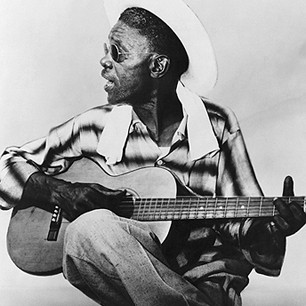 Lightnin' Hopkins playing acoustic guitar
Lightnin' Hopkins playing acoustic guitar
Sam “Lightnin'” Hopkins, a blues legend, learned directly from Blind Lemon Jefferson in the 1920s, establishing a lineage to the earliest blues traditions. He was a dynamic electric guitarist in the 1950s, but is perhaps best known for his nimble acoustic fingerpicking during the 1960s folk-blues revival. Like John Lee Hooker, Hopkins’ playing was characterized by its unpredictability and improvisational nature, often seeming to be composed in the moment, which was frequently the case.
Eddie Van Halen
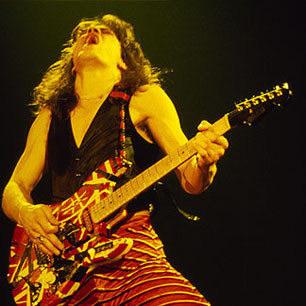 Eddie Van Halen performing on guitar
Eddie Van Halen performing on guitar
Eddie Van Halen revolutionized guitar playing with his innovative techniques and sound. Obsessed with sonic exploration, Van Halen could make even simple guitar lines sound monumental. He pioneered techniques like finger-tapping, dramatically expanding the vocabulary of rock guitar. Van Halen sought to create music that was both technically sophisticated and artistically ambitious, yet never lost touch with the power of catchy hooks and high-energy rock and roll.
Steve Howe
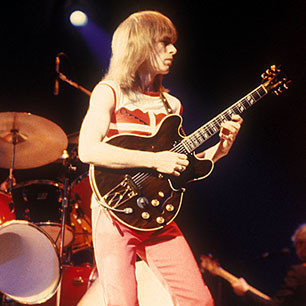 Steve Howe of Yes playing guitar
Steve Howe of Yes playing guitar
Steve Howe, the guitarist for the progressive rock band Yes, distinguished himself by incorporating a wide array of musical styles into his playing during an era dominated by blues-rock. Howe seamlessly integrated jazz, country, flamenco, ragtime, and psychedelia into the progressive rock framework of Yes. The iconic ringing harmonics that open “Roundabout” are among Howe’s most recognizable moments, but albums like Close to the Edge showcase his full range, from delicate acoustic passages to high-octane rock riffs.
Jerry Miller
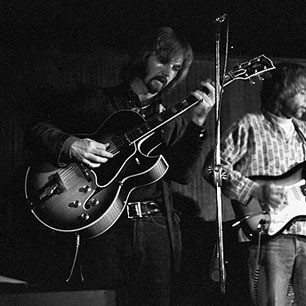 Jerry Miller of Moby Grape playing guitar
Jerry Miller of Moby Grape playing guitar
Jerry Miller honed his guitar skills in the Pacific Northwest R&B bar scene before joining the San Francisco band Moby Grape. His guitar playing was characterized by its disciplined and song-oriented approach, never becoming self-indulgent. Miller’s solos were propulsive and always served the direction of the song, making him a key element in Moby Grape’s musically rich and diverse sound.
Link Wray
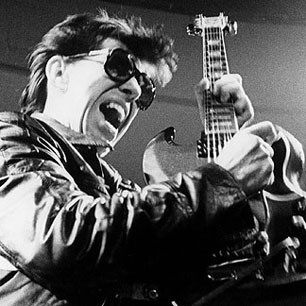 Link Wray playing electric guitar
Link Wray playing electric guitar
Link Wray is the originator of one of the most crucial D chords in rock history, heard in all its raw power on the epochal 1958 instrumental “Rumble.” By intentionally damaging his amplifier’s speaker cone with a pencil, Wray created the overdriven, distorted guitar sound that would be adopted and popularized by guitarists like Pete Townshend and Jimi Hendrix. “Rumble” and Wray’s pioneering use of distortion were profoundly influential on the development of rock guitar.
Vernon Reid
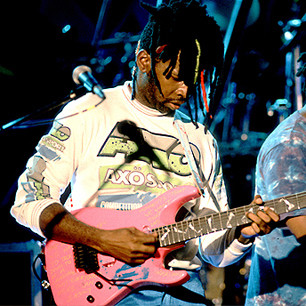 Vernon Reid of Living Colour playing guitar
Vernon Reid of Living Colour playing guitar
Vernon Reid revitalized hard rock by injecting elements of soul, jazz, and hip-hop into the genre. As the guitarist for Living Colour, Reid pushed musical boundaries and challenged conventions. His solos embraced the free-form abstraction of his early days as a jazz musician, yet possessed the raw power and intensity to resonate with fans of heavy metal bands like Metallica. Reid’s genre-bending approach and virtuosity made him a significant figure in modern rock guitar.
Hubert Sumlin
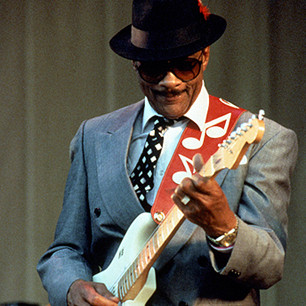 Hubert Sumlin playing guitar with Howlin' Wolf
Hubert Sumlin playing guitar with Howlin' Wolf
Hubert Sumlin’s guitar work on Howlin’ Wolf classics such as “Wang Dang Doodle,” “Back Door Man,” and “Spoonful” became a major influence on Keith Richards and the entire generation of British blues musicians. Howlin’ Wolf’s idiosyncratic phrasing was challenging for many sidemen, but Sumlin masterfully embellished the singer’s every vocal nuance with angular guitar phrases, vibrato-laden riffs, and audacious glissandos, creating a distinctive and essential blues guitar style.
Mick Ronson
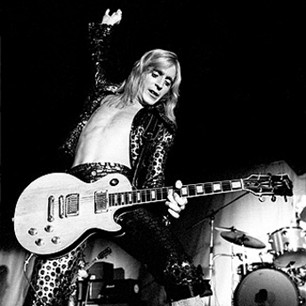 Mick Ronson playing guitar with David Bowie
Mick Ronson playing guitar with David Bowie
Mick Ronson, a working-class guitarist from northern England, provided the musical substance to David Bowie’s theatrical glam rock in the 1970s. Ronson, who passed away in 1993, became the quintessential British glam guitarist, known for his emotionally charged and physically expressive solos, heavily influenced by his hero Jeff Beck. A versatile and sensitive accompanist, Ronson also worked with a diverse range of artists from Bob Dylan to Morrissey, demonstrating his wide-ranging musical talents.
Danny Gatton
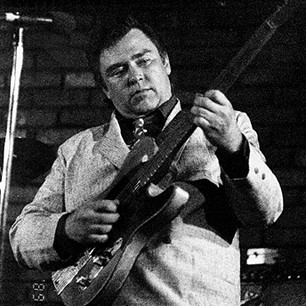 Danny Gatton playing guitar
Danny Gatton playing guitar
Danny Gatton, though not a mainstream superstar, was a revered figure among guitarists. His incredible technical skill allowed him to effortlessly navigate a vast range of styles, from laid-back, banjo-like country tunes to powerful power chords and melodic jazz explorations. Gatton’s virtuosity was immense, yet he remained relatively unknown to the general public. Tragically, he took his own life in 1994 just as his national profile was beginning to rise.
Zoot Horn Rollo
 Zoot Horn Rollo of Captain Beefheart
Zoot Horn Rollo of Captain Beefheart
Zoot Horn Rollo, born Bill Harkleroad, was a key figure in Captain Beefheart’s avant-garde musical universe. Captain Beefheart famously instructed, “Mr. Zoot Horn Rollo, hit that long, lunar note and let it float,” and Rollo delivered far beyond that. At only nineteen, he played on the groundbreaking Trout Mask Replica in 1969 and for the next five years brought Beefheart’s cubist riffs and surreal, science-fiction infused Delta blues to life, showcasing his exceptional musical abilities in a highly unconventional context.
Ike Turner
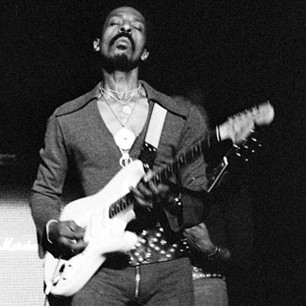 Ike Turner playing guitar
Ike Turner playing guitar
Born in the Mississippi Delta, Ike Turner was a pioneering guitarist who successfully translated the intensity of blues into a more commercially accessible musical format. His signature sound, built around his sharp, rhythmic guitar playing, combined driving four-on-the-floor rock energy, raw soul shouts, and precise musical execution into a thrilling and dizzying sonic assault. Turner’s innovative and high-energy style was crucial in the development of rock and roll.
Jonny Greenwood
 Jonny Greenwood of Radiohead playing guitar
Jonny Greenwood of Radiohead playing guitar
Jonny Greenwood, one of Radiohead’s two lead guitarists, shares a symbiotic musical relationship with Ed O’Brien. Greenwood often takes on the more traditional lead guitar role, exemplified by his distinctive, unwell-sounding bends in songs like “Just” and “Paranoid Android.” His guitar playing is characterized by its inventiveness and ability to create both melodic lines and textural soundscapes within Radiohead’s complex musical arrangements.
Ed O’Brien
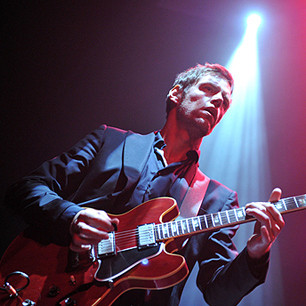 Ed O'Brien of Radiohead playing guitar
Ed O'Brien of Radiohead playing guitar
Ed O’Brien, the other lead guitarist in Radiohead, complements Jonny Greenwood with his focus on creating atmospheric textures and unconventional sounds. While Greenwood leans towards traditional lead guitar elements, O’Brien is known for his sonic experimentation, producing ghostly effects like the above-the-nut jangle on “Lucky” from OK Computer and the high, reverberating pops on “2 + 2 = 5” from Hail to the Thief. O’Brien’s contributions are essential to Radiohead’s unique and innovative sound.
Dickey Betts
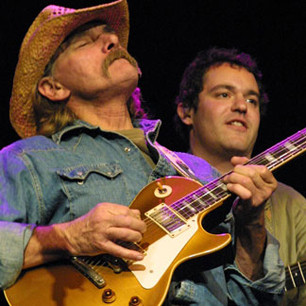 Dickey Betts of The Allman Brothers Band playing guitar
Dickey Betts of The Allman Brothers Band playing guitar
From 1969 to 1971, in The Allman Brothers Band, Dickey Betts provided a crucial rhythmic and melodic counterpoint to Duane Allman’s soaring slide guitar. While Duane captivated audiences with his virtuosity, Betts kept the music grounded and moving forward with his lyrical boogie-based playing. After Duane’s tragic death, Betts effectively took on both roles, becoming the band’s primary guitarist and songwriter. He also penned some of the Allman Brothers’ most beloved songs, including “Ramblin’ Man” and the instrumental “Jessica.”
Roy Buchanan
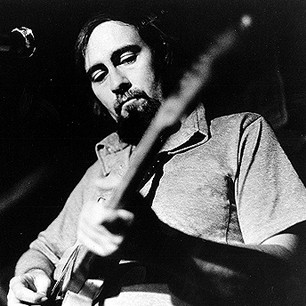 Roy Buchanan playing guitar
Roy Buchanan playing guitar
In 1971, a documentary titled The Best Unknown Guitarist in the World aired on public television, focusing on Roy Buchanan. This title remains fitting even today. Buchanan’s gritty blues-rock guitar playing deeply impressed fellow guitarists, including Jeff Beck. Despite his exceptional talent and the admiration of his peers, the Washington, D.C.-based virtuoso never achieved mainstream success. Tragically, Buchanan’s life ended in 1988 at the age of forty-eight when he took his own life while in jail for public drunkenness.
Tom Verlaine
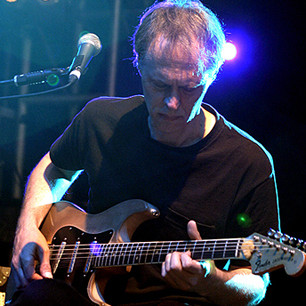 Tom Verlaine of Television playing guitar
Tom Verlaine of Television playing guitar
While Television emerged from the punk rock scene, guitarist Tom Verlaine was far from a musically primitive player. He employed a crisp, precise, and needling guitar attack, favoring long, carefully developed instrumental exchanges with fellow guitarist Richard Lloyd. The result was music of remarkable depth and complexity, reminiscent of John Coltrane’s improvisational jazz, at a time when raw, spontaneous outbursts were the norm in punk rock. Verlaine’s sophisticated and articulate guitar playing set Television apart from many of their punk contemporaries.
Ritchie Blackmore
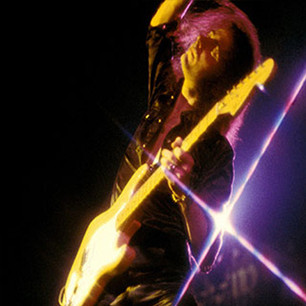 Ritchie Blackmore of Deep Purple playing guitar
Ritchie Blackmore of Deep Purple playing guitar
Ritchie Blackmore, the leader of Deep Purple and Rainbow, is a master of both powerful, foundational riffs and breathtaking virtuoso guitar flights. It is somewhat ironic that despite his deep classical music influences and technical mastery, Blackmore is best known for one of the simplest yet most iconic riffs in rock history: Deep Purple’s “Smoke on the Water.” His blend of classical precision and hard rock power made him a highly influential guitarist.
Jorma Kaukonen
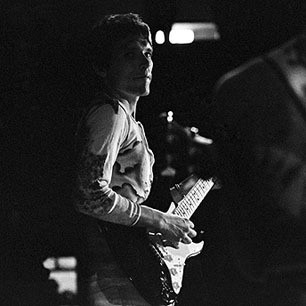 Jorma Kaukonen of Jefferson Airplane playing guitar
Jorma Kaukonen of Jefferson Airplane playing guitar
Jorma Kaukonen, known for his work with Jefferson Airplane and Hot Tuna, is a gifted fingerpicker and blues guitarist. As Jefferson Airplane transitioned from folk-rock to a more psychedelic sound, Kaukonen developed a raga-influenced style that suited the band’s evolving music. His acid-rock peak is perhaps exemplified by “Spare Chaynge,” a nine-minute jam from After Bathing at Baxter’s that was inspired by his admiration for Cream’s extended instrumental explorations.
Mickey Baker
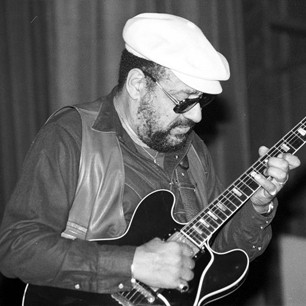 Mickey Baker playing guitar
Mickey Baker playing guitar
Mickey Baker was one of the most prolific session guitarists of the 1950s, his distinctive, crisp playing underpinning R&B classics like Joe Turner’s “Shake, Rattle and Roll” and The Drifters’ “Money Honey.” However, his most iconic achievement is likely his million-selling 1956 duet with Sylvia Vanderpool, “Love Is Strange.” Baker’s haunting guitar licks and urgent chord work in “Love Is Strange” remain as unique and captivating today as they were over half a century ago.
Lou Reed
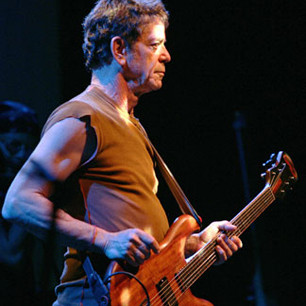 Lou Reed of The Velvet Underground playing guitar
Lou Reed of The Velvet Underground playing guitar
Lou Reed’s distinctive, ramrod-straight guitar strumming style made him one of rock’s all-time great rhythm guitarists. He also brought a thrilling sense of musical anarchy to his lead playing. With The Velvet Underground, Reed established a sound that was as influenced by free jazz innovator Ornette Coleman as it was by the raw energy of “Louie Louie.” His minimalist yet powerful guitar style was integral to The Velvet Underground’s groundbreaking and influential sound.
Paul Kossoff
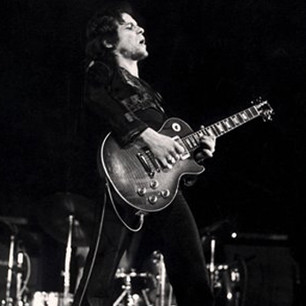 Paul Kossoff of Free playing guitar
Paul Kossoff of Free playing guitar
Paul Kossoff, the guitarist for British hard rock pioneers Free, is often more recognized for his iconic solos, particularly in the radio classic “All Right Now,” than for his name. However, he is highly admired by fellow guitarists for the economy of his playing and the purity of his guitar tone. Kossoff’s musical impact came as much from what he chose not to play as from the exquisite phrasing and emotional depth he brought to each note he did play.
The Enduring Legacy of Guitar Heroes
Rolling Stone’s list of the top 100 guitar players is more than just a ranking; it’s a testament to the profound and diverse impact of the guitar on modern music. From blues pioneers to hard rock innovators, these musicians have collectively shaped genres, inspired generations, and continue to influence the sound of music today. Exploring this list is an invitation to delve deeper into the rich history of guitar playing and appreciate the artistry and innovation of these remarkable musicians who have earned their place among the top guitar players of all time.

